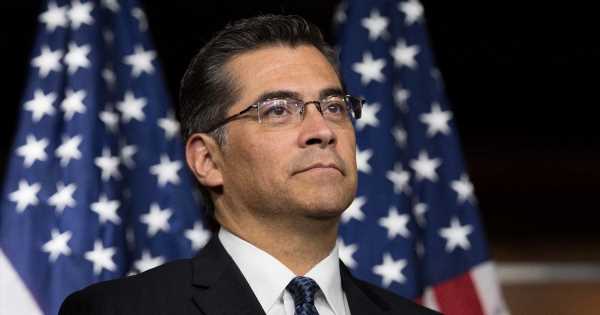In the U.S. Government Accountability Office’s ninth comprehensive report on the COVID-19 pandemic this week, the watchdog said “significant improvements are needed” when it comes to public health emergency response.
The GAO zeroed in on the U.S. Department of Health and Human Services’ leadership in particular, announcing that it was adding the agency to its “High Risk List.”
“For over a decade, we have found issues with how HHS’ leadership prepares for and responds to emergencies, including COVID-19, other infectious diseases, and extreme weather events, such as hurricanes,” wrote the watchdog in its report on Thursday.
WHY IT MATTERS
The GAO’s “high risk” list comprises programs and operations that it defines as “vulnerable to waste, fraud, abuse, or mismanagement, or in need of transformation.”
Over the course of more than a decade, GAO had made 115 recommendations to HHS related to its response to public health emergencies.
Of these, only 33 have been implemented, and 10 have been closed. The remaining 72 are outstanding – and 49 of those relate to the COVID-19 pandemic.
The watchdog notes that it named HHS’ leadership and coordination of public health emergencies as an emerging issue requiring close attention in March 2021.
GAO highlighted several “persistent deficiencies” in key areas, including:
- Establishing clear roles and responsibilities for federal, state, local, tribal, territorial and nongovernmental partners
- Collecting and analyzing complete and consistent data to inform decision-making, including any midcourse changes, as well as future preparedness
- Providing clear, consistent communication to key partners and the public
- Establishing transparency and accountability to help ensure program integrity and build public trust
- Understanding key partners’ capabilities and limitations
The watchdog drew particular attention to supply chain issues, noting that HHS has not addressed its September 2020 recommendation that the department work with the Federal Emergency Management Agency to develop mitigation response plans for the remainder of the pandemic.
It also targeted the “incomplete and inconsistent” data HHS has relied on throughout the pandemic to respond to public health emergencies.
COVID-19 testing, case counts and hospital capacity data have been challenging to interpret due to gaps in collection, said GAO. In addition, it pointed to race and ethnicity data regarding COVID-19, saying that shortcomings in data “limited the nation’s ability to effectively target pandemic response efforts” for disproportionately affected groups.
Nursing home data got a mention too: “By not requiring nursing homes to submit data from the first 4 months of 2020, HHS limited the usefulness of the data in helping to understand the effects of COVID-19 in nursing homes during the initial stage of the response.”
Overall, the fragmented nature of public health reporting has contributed to struggles with information sharing.
“Under the existing process – which HHS has had to rely on during the COVID-19 pandemic – public health data are collected by thousands of different health departments and laboratories, as well as multiple federal agencies,” said the GAO report.
“Technological capabilities vary widely among these entities, which may use systems and software that are not interoperable and unable to exchange and share data,” it continued.
The GAO said that it would evaluate HHS’ efforts to address public health emergencies against its “high-risk criteria.”
“By taking actions to enhance its leadership and coordination of public health emergencies, HHS will be better positioned to help the nation more effectively prepare for, and respond to, future public health emergencies in a timely and effective manner,” said the report.
THE LARGER TREND
Data collection has been a recurrent issue since the start of the pandemic, with the former presidential administration triggering anxiety and confusion when it directed hospitals to report COVID-19 information to HHS rather than the U.S. Centers for Disease Control and Prevention.
In November 2020, former HHS Chief Technology Officer Ed Simcox told Healthcare IT News that the crisis made it clear that the gaps in U.S. information sharing must be addressed.
And at HIMSS in August 2021, National Coordinator for Health IT Micky Tripathi and Dr. Daniel Jernigan, acting deputy director for public health science and surveillance at the CDC, agreed that overcoming data-sharing barriers is essential.
But the Biden administration has still faced hurdles where agency leadership is concerned. Food and Drug Administration Commissioner Robert Califf is reportedly in “limbo” in the Senate, with a lack of enough votes to push his nomination through.
ON THE RECORD
“As devastating as the COVID-19 pandemic has been, more frequent extreme weather events, new viruses, and bad actors who threaten to cause intentional harm loom, making the deficiencies GAO has identified particularly concerning,” read this week’s GAO report.
“Not being sufficiently prepared for a range of public health emergencies can also negatively affect the time and resources needed to achieve full recovery.”
Kat Jercich is senior editor of Healthcare IT News.
Twitter: @kjercich
Email: [email protected]
Healthcare IT News is a HIMSS Media publication.
Source: Read Full Article
